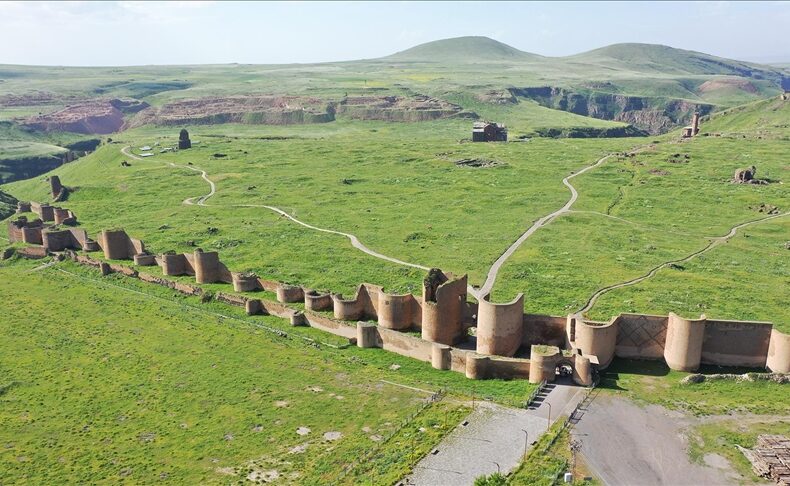
The 1,000-Year-Old Ani Walls Defy Time and History
Located in the Arpaçay Valley of Kars, Türkiye, the Ani Archaeological Site, a UNESCO World Heritage location, stands out not only with its multicultural heritage but also with its magnificent city walls, which have remained standing for over a millennium.
Ani: The Cradle of Civilizations
Throughout its long history, Ani was ruled by various civilizations including the Bagratids, Byzantines, Seljuks, Georgians, Mongols, Ilkhanids, Karakoyunlus, Akkoyunlus, and the Ottoman Empire. It was also a rare city where Christians and Muslims lived side by side for centuries.
Spanning nearly 100 hectares, Ani earned titles such as the City of a Thousand and One Churches, Cradle of Civilizations, and City with Forty Gates due to its rich cultural and religious diversity. The site was a key passage from the Caucasus into Anatolia and hosts a variety of religious structures including mosques, churches, and cathedrals.
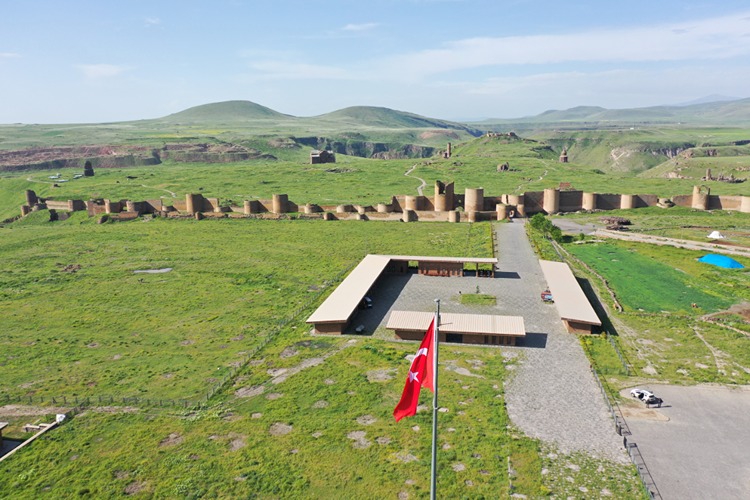
Architectural Power That Has Withstood the Centuries
The city walls of Ani, which stretch for approximately 5 kilometers, were originally constructed in the 9th century by the Bagratid Kingdom. According to Dr. Muhammet Arslan, the head of the Ani excavation team:
📣 Our WhatsApp channel is now LIVE! Stay up-to-date with the latest news and updates, just click here to follow us on WhatsApp and never miss a thing!!
“The walls suffered the most damage during the 1064 conquest by Sultan Alp Arslan. However, the Sultan immediately ordered their restoration following the victory. This command is recorded on an inscription placed above the Lion Gate, known as the first Turkish-Islamic inscription in Anatolia.”
Strategic and Resilient Medieval Engineering
Dr. Arslan also emphasized the impressive engineering behind the walls:
“Even after nearly 1,000 years, the walls still stand strong. The northern sections, opening onto flat terrain, were constructed with double walls for extra defense. In contrast, other parts were built as single walls, utilizing the natural defense provided by the Arpaçay, Mığmığ, and Bostanlar streams.”
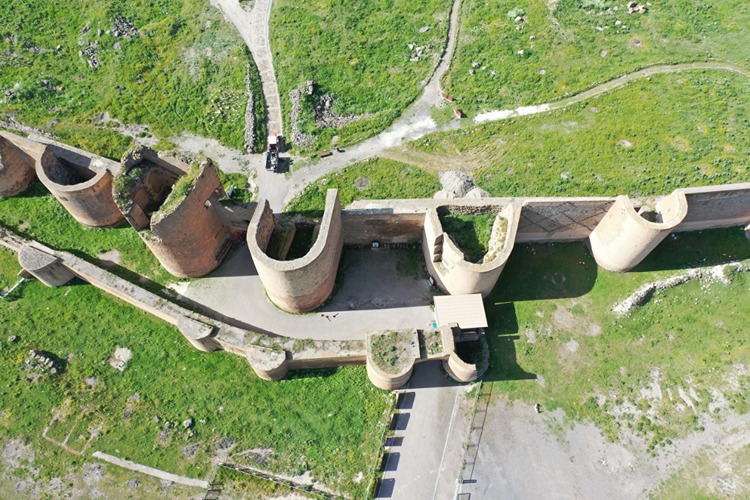
Seven Gates, Each Telling a Unique Story
The Ani Walls feature seven distinct gates, each with its own historical and architectural significance. Dr. Arslan detailed:
“The most prominent is the Lion Gate, which served as the main entrance into Anatolia and Kars. To the west are the Twin-Body Gate and the Hidden Gate. To the east lies the Satrançlı Gate—also called the Hıdırellez Gate—adorned with bull and dragon motifs on its towers, iconic elements of Turkic art. Other gates include the Mığmığ Stream Gate, Vineyard Terrace Gate, and Divin Gate. The Divin Gate is particularly notable, as it faces the historical city of Divin, now on the Armenian border.”
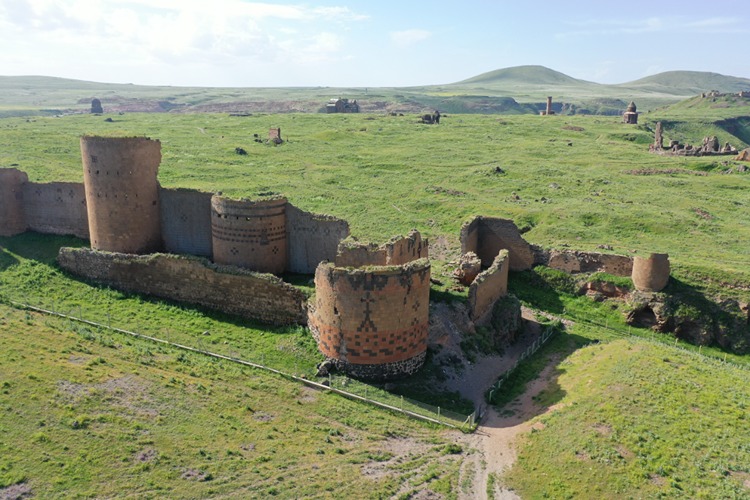
A Living Historical Destination
Having been added to the UNESCO World Heritage List in 2016, Ani continues to attract thousands of domestic and international visitors annually. Walking among the city’s ancient walls and structures offers a vivid journey through the heart of medieval history.
Why Are the Ani Walls Important?
- Over 1,000 years of continuous presence
- Built by the Bagratids in the 9th century
- Rebuilt under Sultan Alp Arslan after the 1064 conquest
- Home to Anatolia’s first Turkish-Islamic inscription
- Seven monumental gates with symbolic figures
- 5 kilometers of largely intact medieval fortifications
Cover Photo: Cüneyt Çelik/AA
You may also like
- A 1700-year-old statue of Pan unearthed during the excavations at Polyeuktos in İstanbul
- The granary was found in the ancient city of Sebaste, founded by the first Roman emperor Augustus
- Donalar Kale Kapı Rock Tomb or Donalar Rock Tomb
- Theater emerges as works continue in ancient city of Perinthos
- Urartian King Argishti’s bronze shield revealed the name of an unknown country
- The religious center of Lycia, the ancient city of Letoon
- Who were the Luwians?
- A new study brings a fresh perspective on the Anatolian origin of the Indo-European languages
- Perhaps the oldest thermal treatment center in the world, which has been in continuous use for 2000 years -Basilica Therma Roman Bath or King’s Daughter-
- The largest synagogue of the ancient world, located in the ancient city of Sardis, is being restored

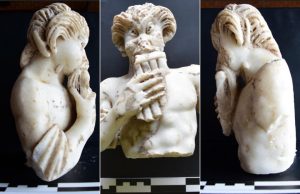
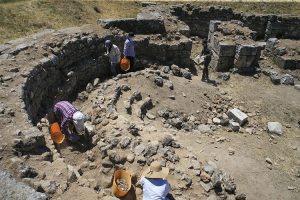
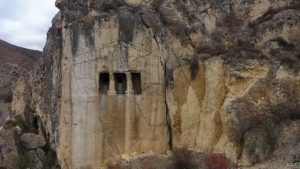
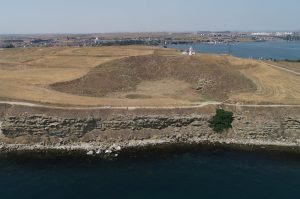
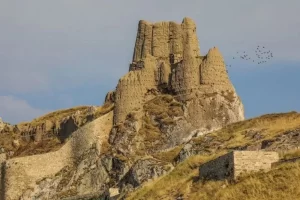
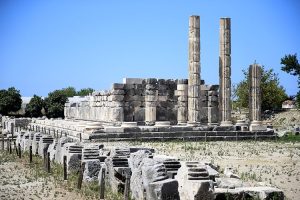
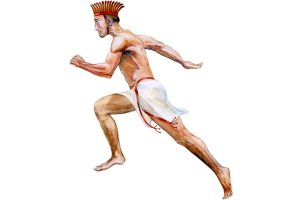

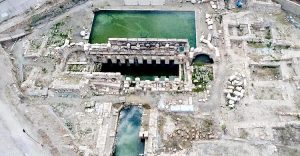
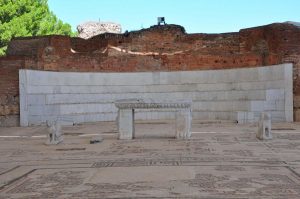
Leave a Reply